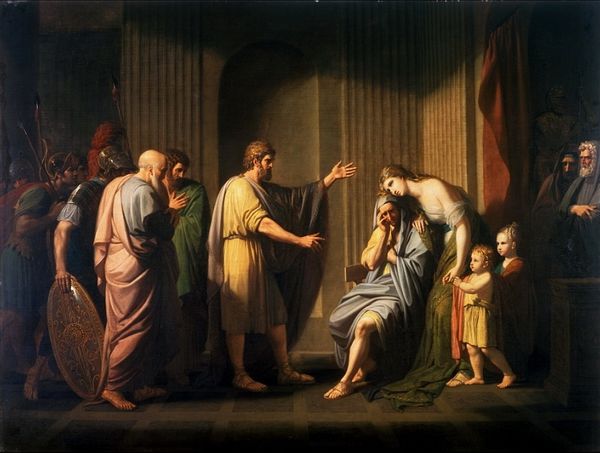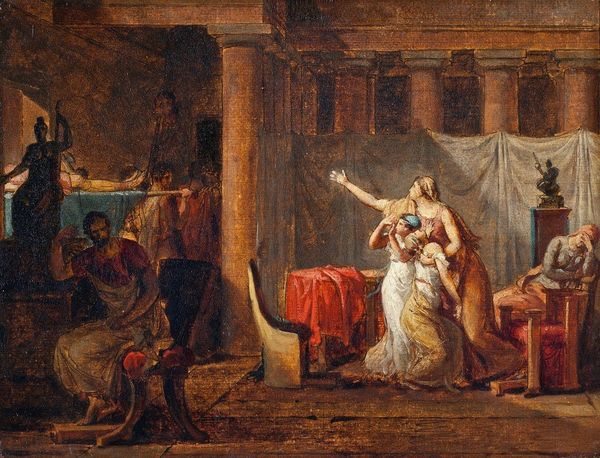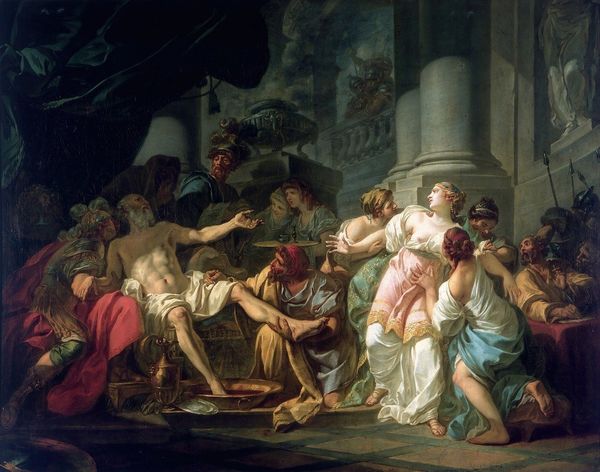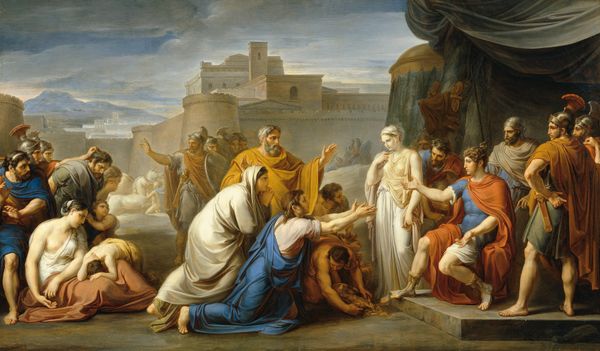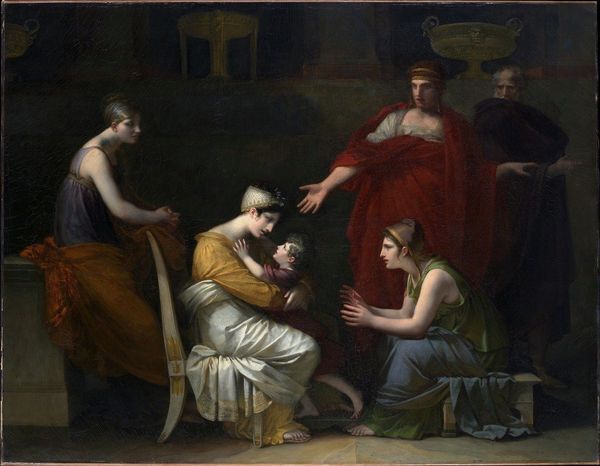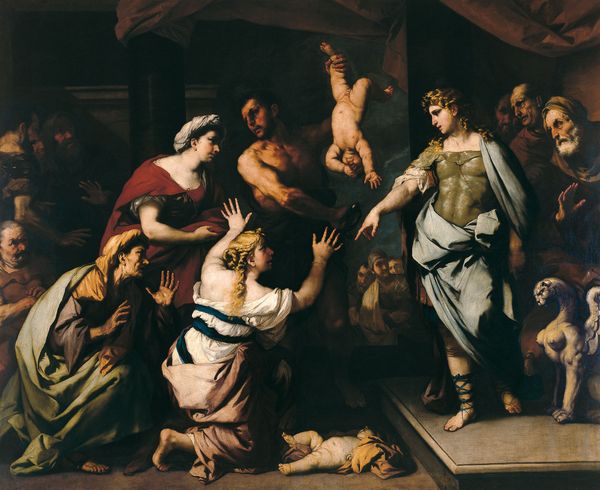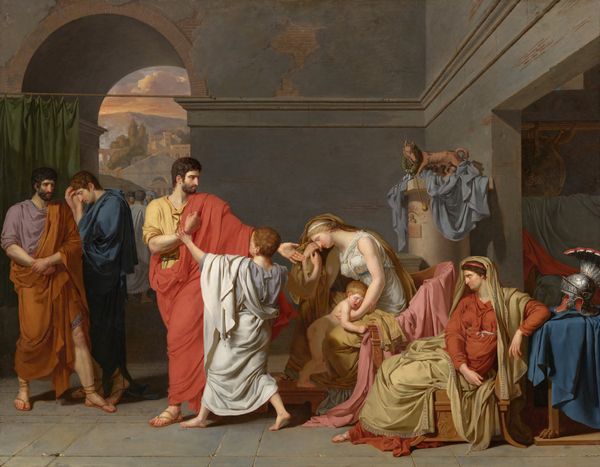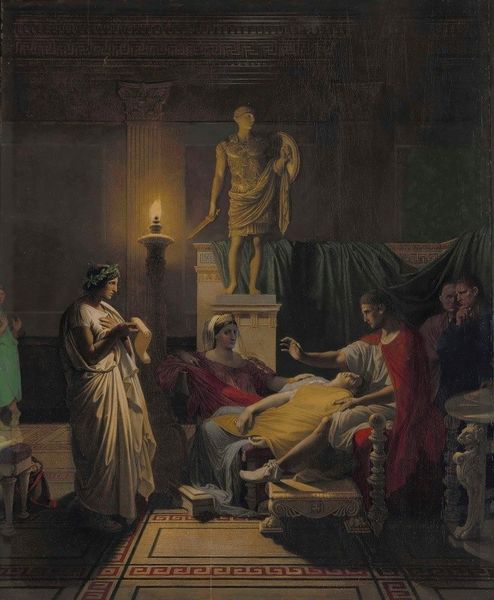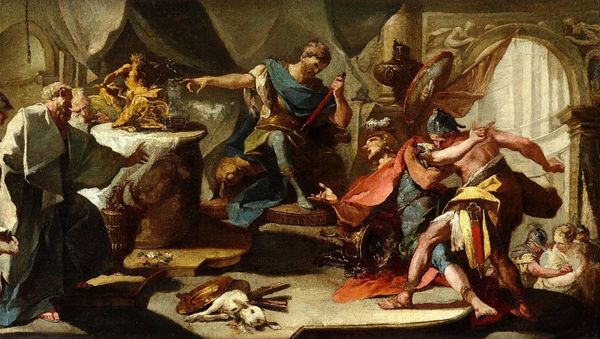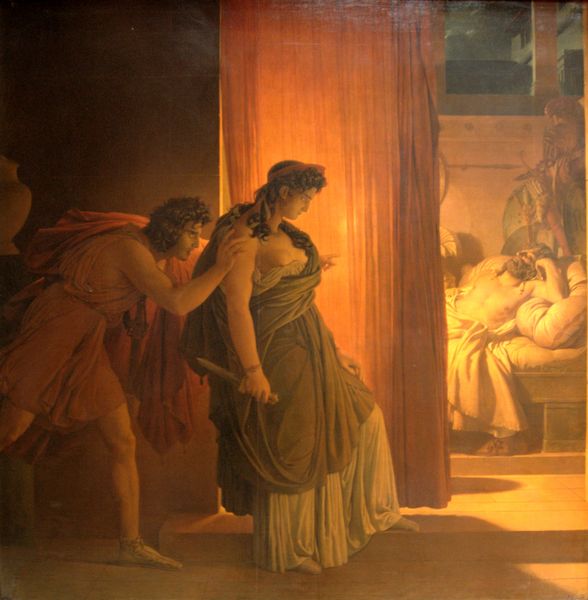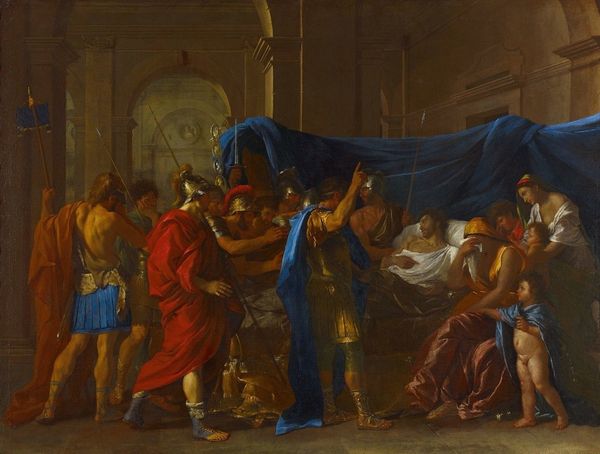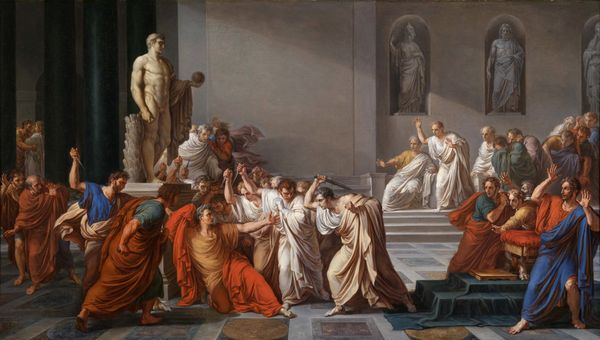
painting, oil-paint
#
portrait
#
neoclacissism
#
narrative-art
#
painting
#
oil-paint
#
classical-realism
#
figuration
#
history-painting
Dimensions: 323 x 422 cm
Copyright: Public domain
Editor: We're looking at "Lictors Bearing to Brutus the Bodies of his Sons" by Jacques-Louis David, an oil painting from 1789. The scene feels so…staged, almost theatrical, with a very clear division between the stoic Brutus and the emotional women. What do you see as the central conflict being portrayed here? Curator: I see a deliberate fracturing of the domestic and the political. David’s neoclassical style, so influenced by Enlightenment ideals, becomes a stage to explore conflicting loyalties – family versus republic, personal grief versus civic duty. Notice how Brutus is positioned in shadow, almost sculptural, embodying reason and patriarchal power. Editor: Right, he’s separated both physically and emotionally from the women's grief. What's the significance of that division? Curator: It highlights the gendered expectations of the time and the personal cost of revolution. Women, often confined to the domestic sphere, are visibly expressing their emotions, while Brutus embodies the stoicism valued in the patriarchal public sphere. The painting becomes a critique, almost, of this very societal demand for emotionless allegiance, isn’t it? Do you think this portrayal glorifies or questions such patriarchal expectations? Editor: That's a compelling point. I hadn’t considered the inherent critique. The painting definitely forces us to consider the human cost and who bears that burden disproportionately. It also hints at the complexities and potential contradictions within revolutionary ideals. Curator: Exactly. The French Revolution, like many revolutions, promised liberation but often reinforced existing power structures and inequalities. How does understanding this painting deepen your comprehension of intersectional narratives within art history? Editor: It makes me consider whose stories get centered and how artistic movements can perpetuate or challenge dominant ideologies. This painting challenges simplistic notions of heroism and sacrifice. Thanks for making me think! Curator: Likewise. Considering whose perspectives are elevated and whose are suppressed within grand narratives is essential when confronting and assessing art’s legacies and future trajectory.
Comments
No comments
Be the first to comment and join the conversation on the ultimate creative platform.
